“We’ve been here thousands of years,” said Isidro Leal, a member of the Carrizo/Comecrudo Tribe of Texas, or Esto’k Gna, as he surveyed the Rio Grande River atop a high bank fortified over the years by piles of concrete and rebar. From this rise, it is more than 70 miles downstream to the Gulf of Mexico, but double or triple that distance if you follow the wild meanderings of the river itself.
It is in these accordion-like bends and folds of the water’s course that the Esto’k Gna, whose ancestral homelands straddle both sides of the river, identify innumerable sacred sites. “A lot of our artifacts are there,” said Leal, “and old village sites.”
Only a few hundred yards to the north is Yalui Village, a resistance camp set up by the Esto’k Gna at the historic Eli Jackson Cemetery. Esto’k Gna tribal members are buried here, as are the descendents of freed slaves, white abolitionists, and veterans of multiple wars. And long before that, “this spot in particular was always a burial ground for us, always sacred land,” Leal said.
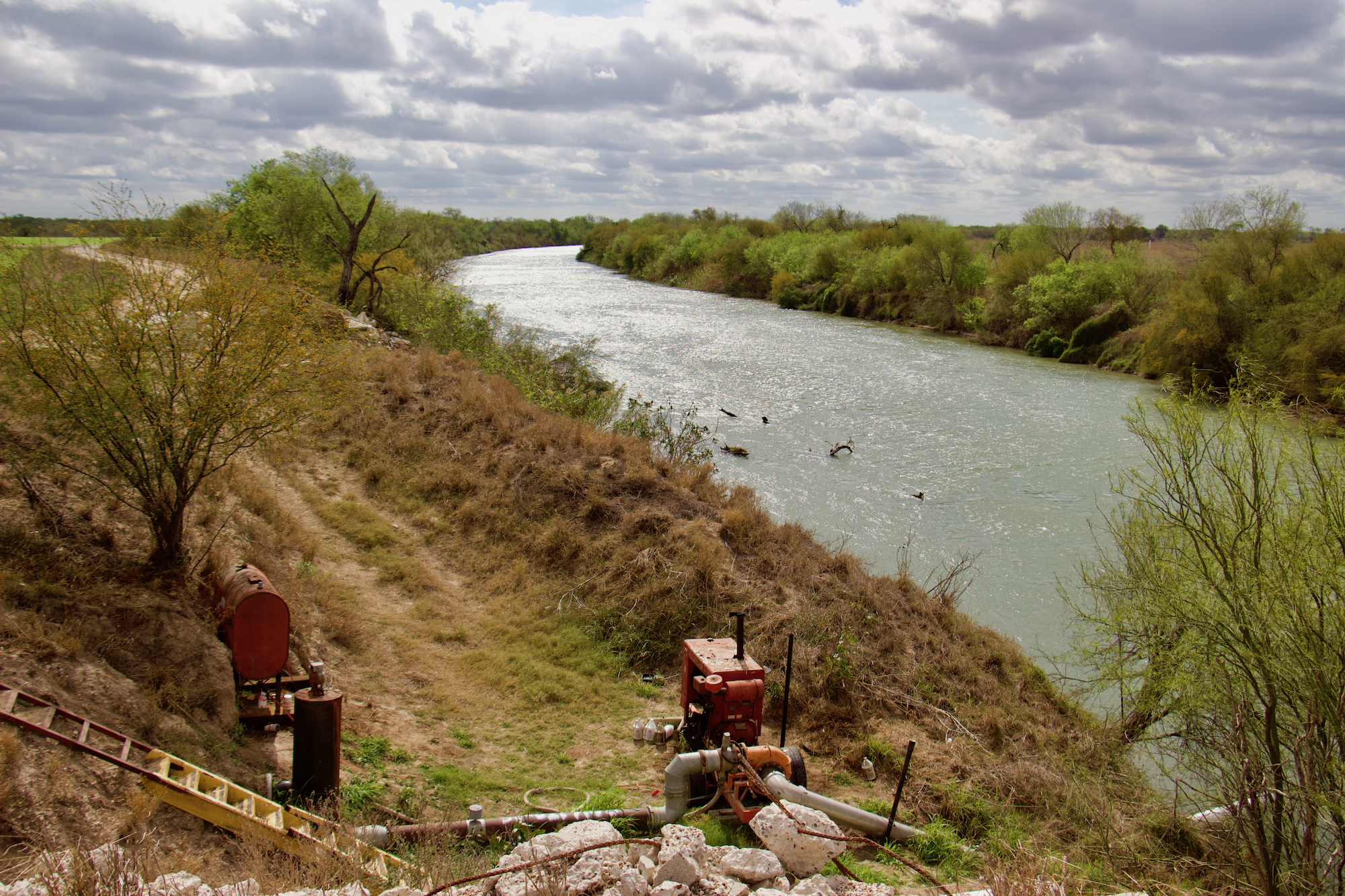
Yet by siting 25 miles of border wall on top of the river levee abutting the cemetery, the government threatened to “completely destroy” Eli Jackson, said Ramiro Ramirez, a descendant of the cemetery’s original founders. It would also destroy another cemetery and chapel a short walk up the road.
After a few years of dormancy, wall construction is reviving with a privately funded wall near Mission, Texas and a new federal contract for 3 miles of new wall at Rio Grande City.
While the Department of Homeland Security Appropriations Act of 2020 recently exempted certain natural areas and “historic cemeteries” from wall construction for another fiscal year, Indigenous sites remain threatened in Texas. To “ensure the expeditious construction” of the wall in the Rio Grande Valley, the U.S. Department of Homeland Security last fall waived dozens of federal laws, including the American Indian Religious Freedom Act and the Native American Graves Protection and Repatriation Act.
In opposition, the Esto’k Gna tribe has joined forces with the Ramirezes and other local landowners, reviving ancestral villages along the length of the Rio Grande. Part resistance camps and part decolonial education sites, these villages stand squarely in the pathway of President Donald Trump’s proposed border wall expansion.
'People came and raided us, invaded us. Occupied us. And now we’re learning to take all of that back'
Unlike Standing Rock or Wet’suwet’en, the names of Yalui Village, Lehai Village, Mariposa Village, and Camp Toyahvale are largely unknown. And yet these villages are some of the most critical resistance work undertaken in response to the manifold crises converging on South Texas—the border wall, to be sure, but also the fracking, flaring, mining, and pipelining accelerating climate change, and the criminalization of largely Indigenous Central American asylum-seekers and the theft and internment of their children.
“This is the head of the snake,” Carrizo/Comecrudo tribal chairman Juan Mancias said of the region. “Everything is coming this way. If we don't cut the head of the snake off and just continue to break its back every once in a while, it'll heal itself.”
In the shadow of the wall
The Esto’k Gna started setting up villages along the Texas/Mexico border in 2016, amid the thick of the resistance at Standing Rock and during the season of Trump’s election. Starting with a base camp just south of San Antonio called Somi Se’k, the tribe established Camp Toyahvale in far West Texas, where intensive fracking had caused sacred springs to run dry. Cotoname Village followed in 2017 on the Gulf Coast to resist the siting of liquefied natural gas (LNG) infrastructure on Esto’k Gna fishing grounds.
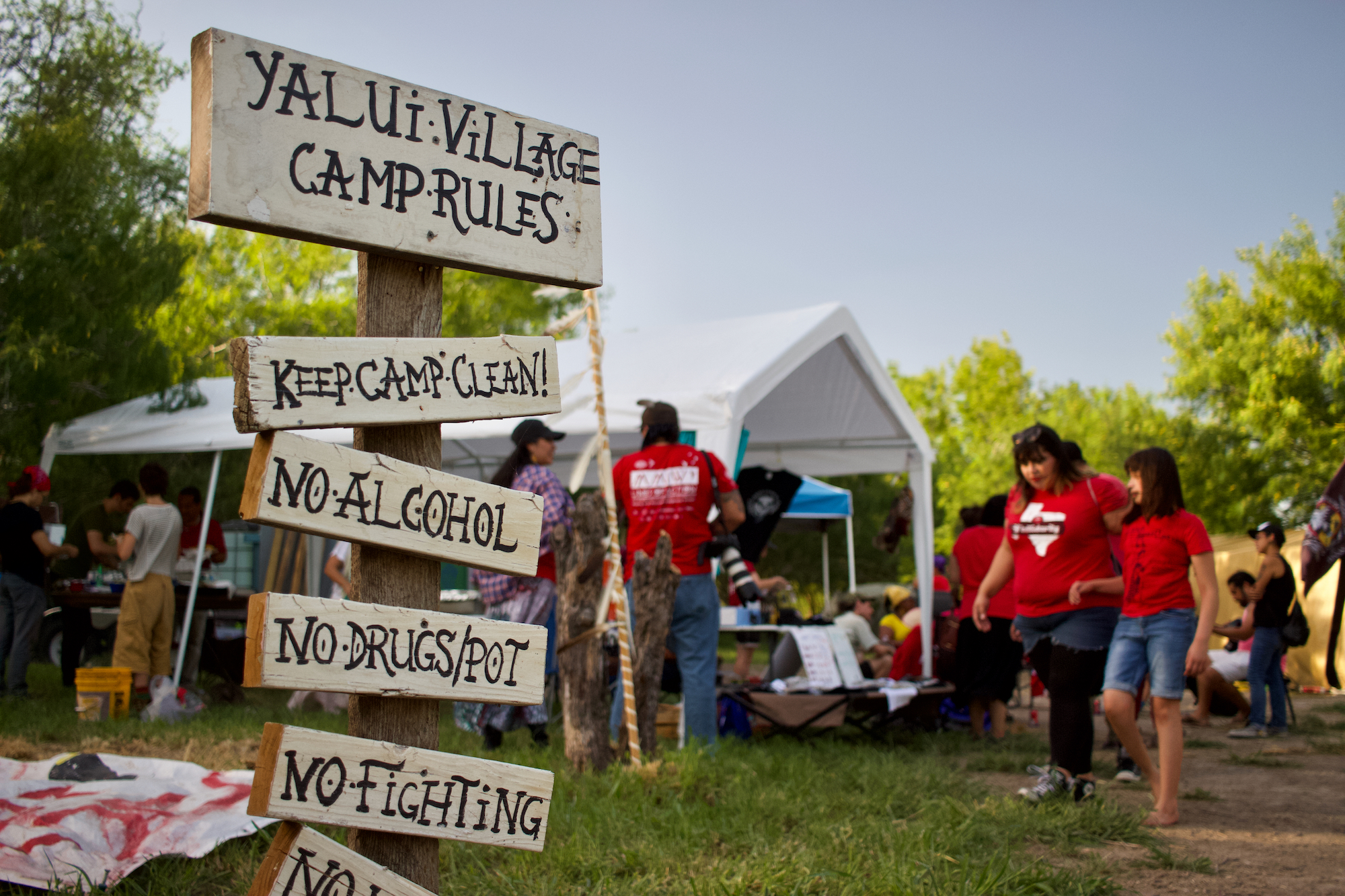
In 2019, three more camps were established along the proposed route for the wall: Mariposa Village on the grounds of the National Butterfly Center, Yalui Village at Eli Jackson Cemetery, and Lehai Village on land adjacent to the privately funded border wall. Others are planned to protect sacred peyote gardens and fight planned LNG pipelines and export terminals in Brownsville.
While the Esto’k Gna maintains the land at all camps year-round, the number of villagers varies. At Yalui, presently in watch-and-wait mode, at least one person is always there tending sacred fire, though the camp can fill on weekends and for specific actions to include dozens of villagers.
Yalui (meaning “butterfly” in Hokom) Village has attracted the most attention for its location at Eli Jackson Cemetery, where the tribe has maintained a constant presence since January 2019. This cemetery is of ancestral significance not only to the Esto’k Gna but to multiple traditions of liberation and resistance. Established by a white former slaveholder from Alabama who married an emancipated slave, the chapel and two family cemeteries were founded after Nathaniel Jackson, Matilda Hicks, and 11 other freed slaves fled Alabama’s Fugitive Slave Act in the 1850s. “Most people were going North,” says Ramiro Ramirez, great-great-grandson of Nathaniel, who founded Eli Jackson Cemetery. “They decided to come South,” where slavery was illegal in Mexico.
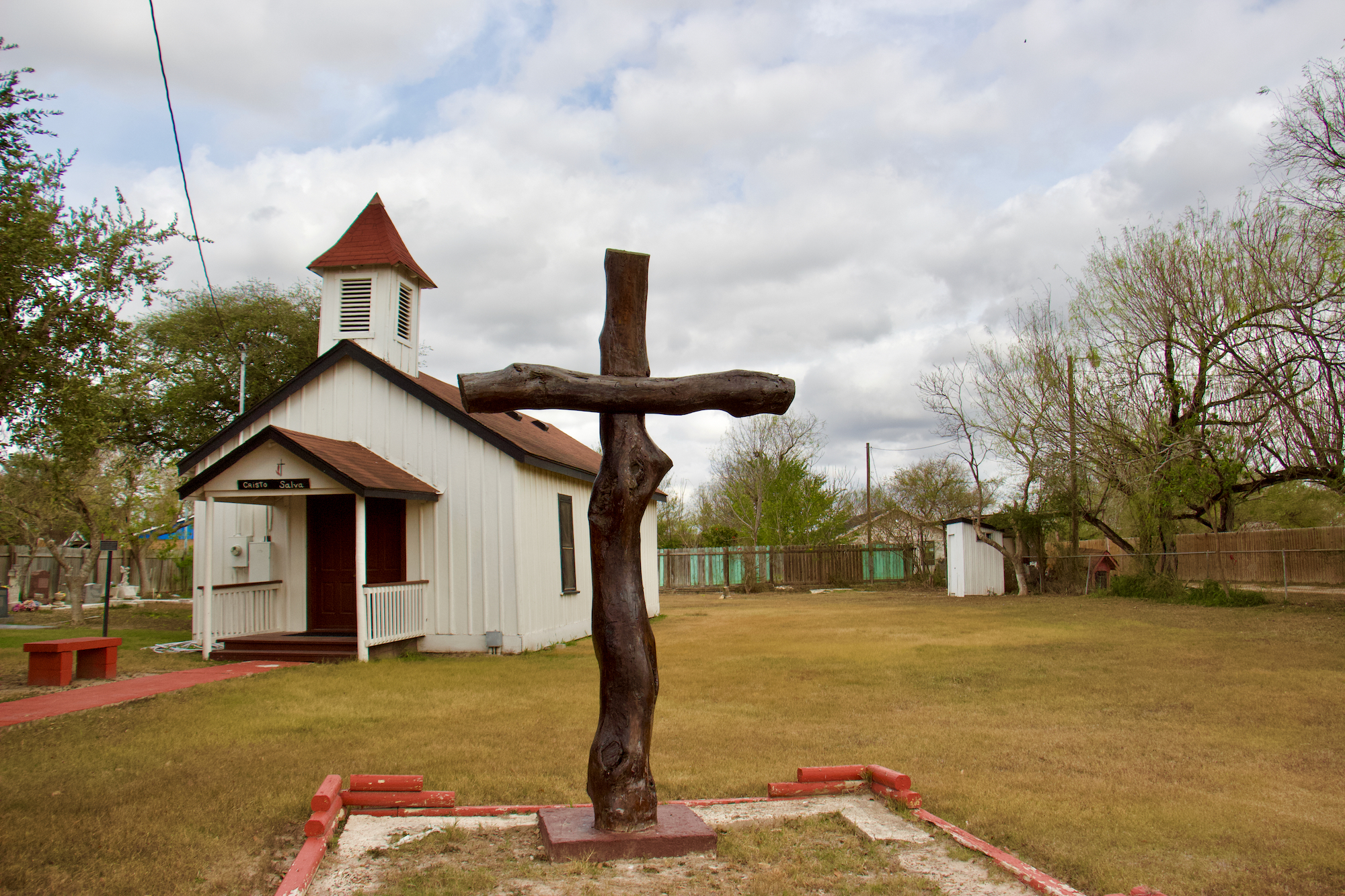
After arriving in the Rio Grande Valley, however, the group decided not to cross into Mexico, deterred by the prospect of language barriers and that country’s Catholic majority. Instead, they purchased land and in 1874 established the Jackson Ranch Chapel, the first (and now oldest) Protestant church in the Rio Grande Valley. Eventually the area became, according to Ramirez’s wife Melinda, “a really mixed-race community” and ultimately a stop on the Underground Railroad. “There was a cotton trade that would come down,” Melinda explained. “Who was driving the wagons? The slaves. And so they knew exactly how to get through the monte (brush country) and the rattlesnakes and no water, and that was the trail.”
For the Esto’k Gna, the villages resist not only the wall, but the official narrative about Native people in Texas—which too often is that there aren’t any. “People don’t think there’s Natives in Texas,” said Mancias. “That it’s only the federally recognized tribes that need to be dealt with.”
These erasures of Native presence in Texas are rooted in centuries of massacres and missionization at the hands of the Spanish. Starting in the early 16th century, missionaries enslaved Native people for purposes of building Texas’s numerous colonial missions, including those celebrated today in San Antonio as UN World Heritage sites. But the missions also initiated a more insidious form of genocide. As Native people entered the missions, conversion to Catholicism and Spanish names and language fractured tribal identities, hiding original peoples in plain sight.
“It created a rift among our people, because of the missions,” Mancias said.
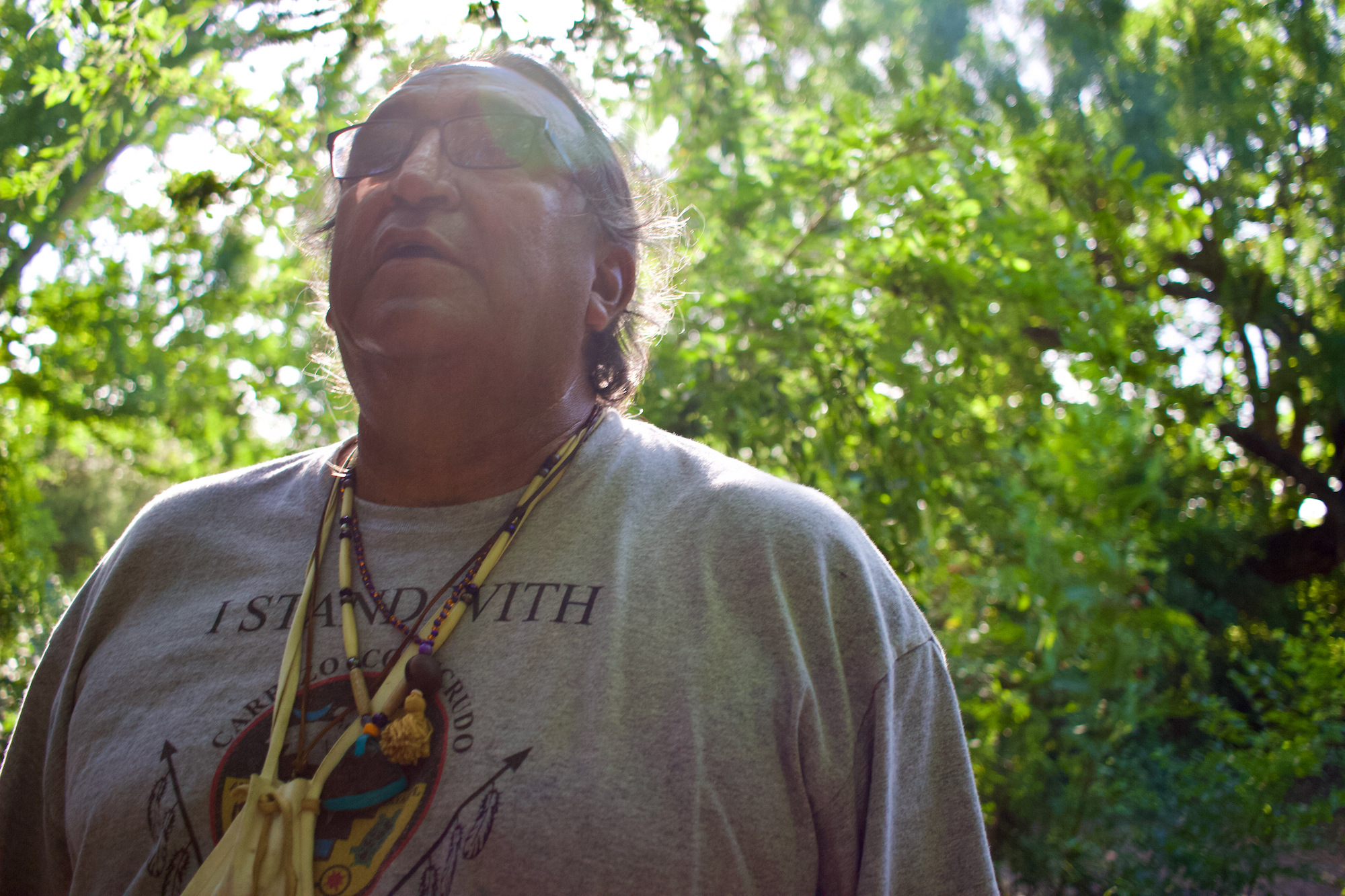
Today the Esto’k Gna tribe has 1,600 enrolled members and another 2,000 registered, with many more throughout South Texas as descendants. But “if you talk to present day people,” Mancias said, “a lot of them don't even recognize the fact that they're Native anymore.”
If the threat posed by the border wall to Texas Natives has received far less attention than elsewhere, it’s because “a lot of the tribes (here) have been disenfranchised,” said Leal. “A lot of us didn’t sign treaties, for obvious reasons. Just went into hiding or eventually just sort of disbanded out of the need to survive. Carrizo/Comecrudo is one of them.”
But although the Esto’k Gna lacks either federal or state recognition, this can be an advantage. As Mancias observed, the lure of contracts has led some federally recognized tribes in Texas, such as the Ysleta del Sur Pueblo in El Paso, to bid on contracts to build the border wall. “We’re more sovereign right now,” said Mancias. “We got nothing to lose and everything to gain.”
Eventually, Mancias hopes the villages can be developed into centers for decolonial education, even building a university with an Indigenous curriculum. “We’ll teach math, reading, writing and stuff, but at the same time, we want to talk about colonization... that we’re on the verge of destroying the only planet that can hold our life forms. And talk about that kind of science, rather than the science they want to proclaim about controlling the petroleum and pushing their racism on us.”
These are villages
Both the Esto’k Gna and the Ramirez family at Eli Jackson Cemetery are watching to see what develops next. Last March, the legal firm Earthjustice filed suit against the federal government on behalf of six plaintiffs affected by the government’s plans, including the Ramirezes and the Carrizo/Comecrudo Tribe of Texas. Currently in federal court, the suit alleges that Trump’s attempt to divert funds to the border wall without Congressional authorization, on the pretext of a national emergency, is unconstitutional.
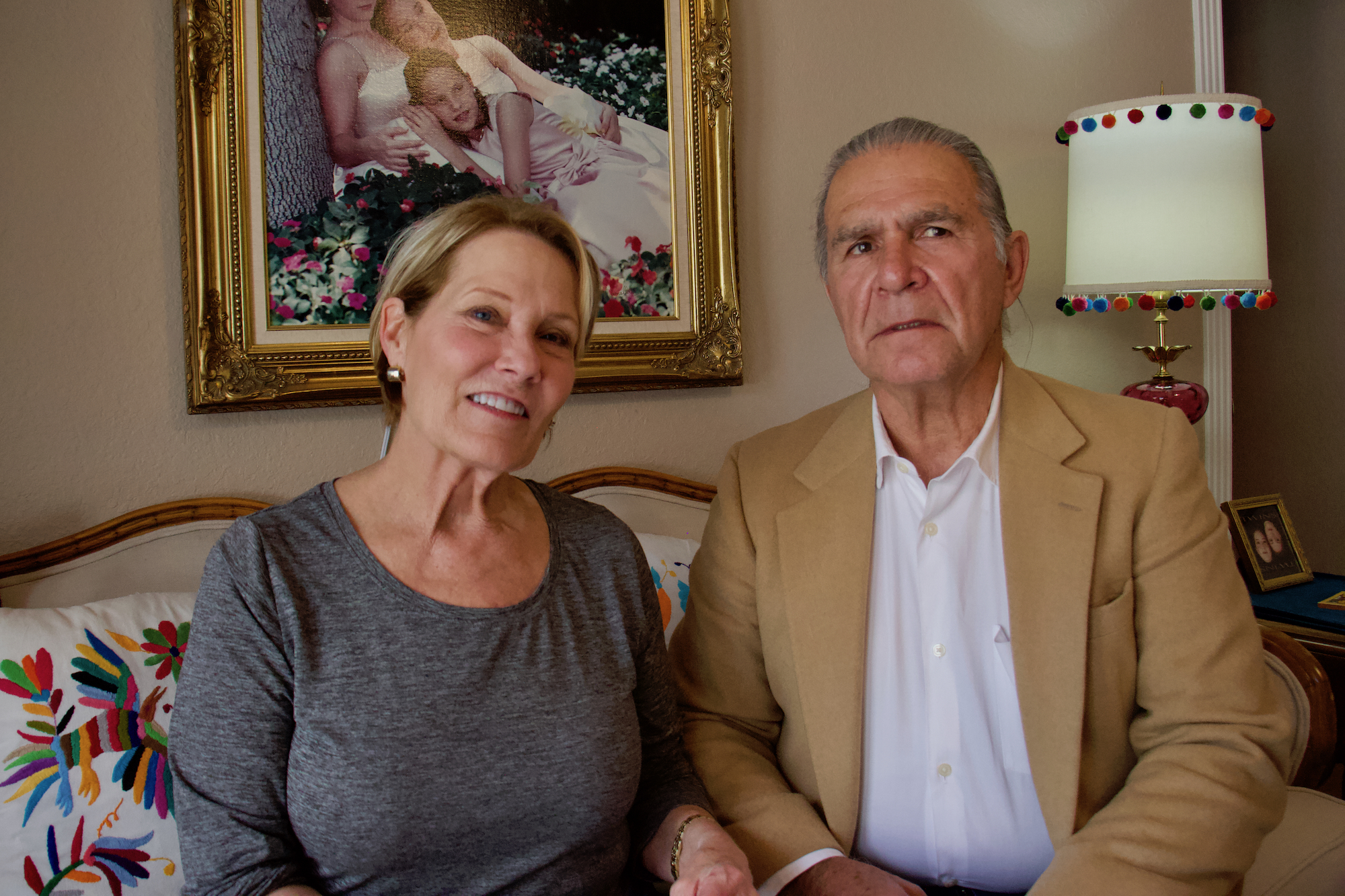
In the meantime, the Ramirezes won a small concession after two lobbying trips to D.C. that resulted in all “historic cemeteries” being exempted from wall construction. So, Melinda, said, “we’re safe for a year.”
After that, Simmons said, “We gotta go through it all over again in September, when they’re ready to submit the new budget.”
Meanwhile, an anti-migrant group operating as We Build the Wall has started construction on a crowdfunded border wall nearby, right next to the National Butterfly Center. “So we’re still occupying out there,” Simmons said. “We’re still watching and monitoring everything out there. And we’re making sure that things don’t happen because they think we all went home and we’re not paying attention.”
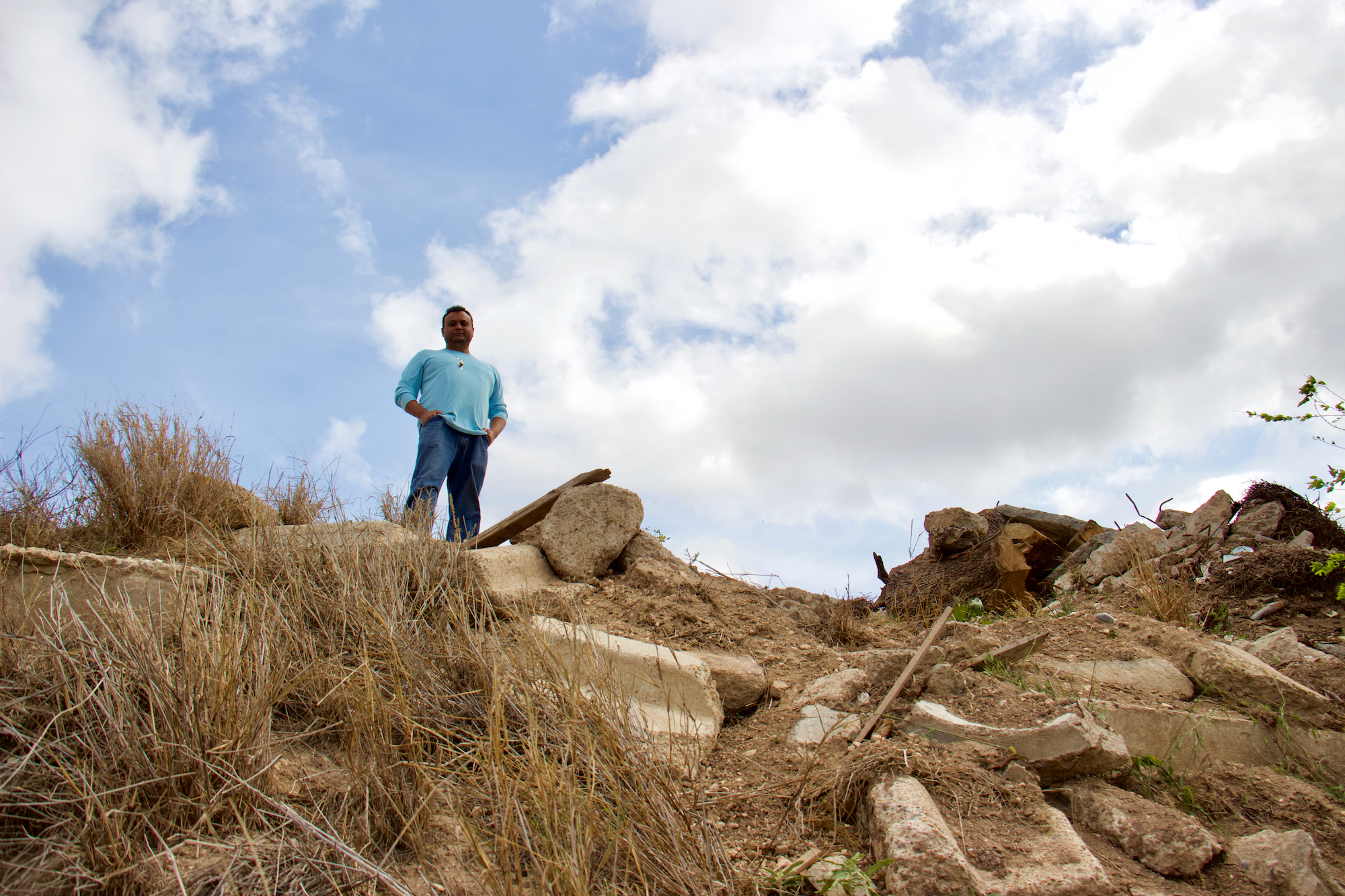
For many at Yalui Village, the issue is deeper than the wall’s route and the wall; it’s the border itself. “The idea of borders is a colonizer idea,” said Leal. “That's something that came from Spain. For us that wasn't really a thing. We mostly traveled wherever we wanted.”
For that reason, the Esto’k Gna is forming alliances with the Tohono O'odham Nation in Arizona, another binational, borderlands tribe 1,200 miles upriver who recently decried the wall’s blasting of burial sites at a Washington, D.C. hearing. The Tohono O’odham is “fighting (the wall) really strong,” said Mancias. “We’re working on setting up a coalition of tribes along the Rio Grande.”
Above all, Mancias wants people to recognize “that there’s camps here. There are villages. This is where the creator put us at this time, to protect that. And we were overcome, we were raided, completely. People came and raided us, invaded us. Occupied us. And now we’re learning to take all of that back. And say, ‘Hey, you gotta grow up. There’s an injustice and you have been a part of it.’ Especially in Texas.”
Marisol Cortez is a writer, scholar, and organizer around a variety of environmental justice issues in her home community of San Antonio, Texas.
Greg Harman is a San Antonio-based environmental organizer. Follow him on Twitter.
Both are co-editors of the online journal Deceleration.news.
Have a story for Tipping Point? Email TippingPoint@vice.com
from VICE https://ift.tt/3cSvLWA
via cheap web hosting
No comments:
Post a Comment